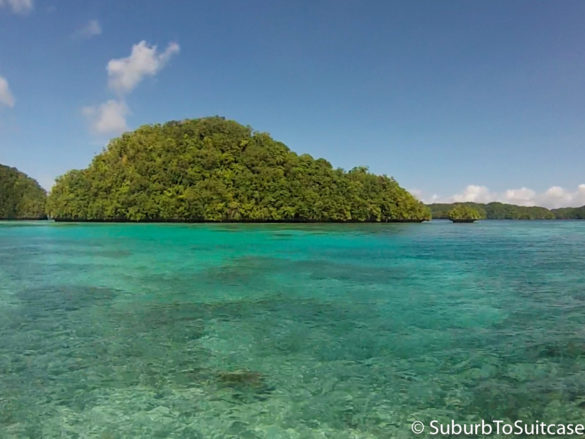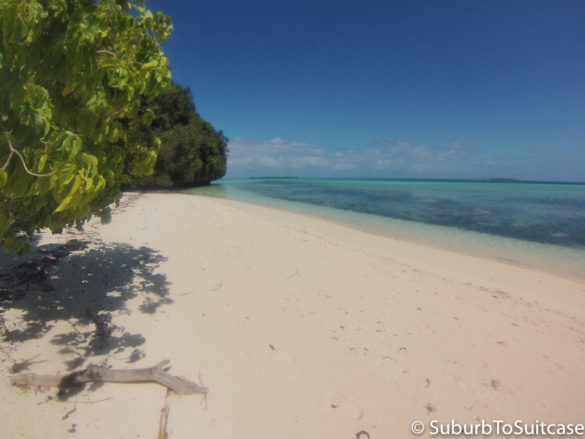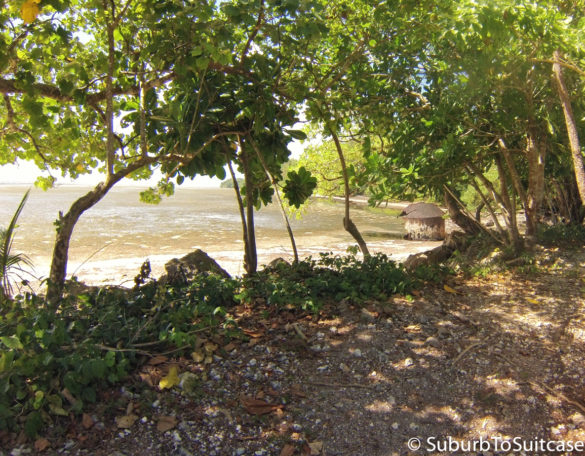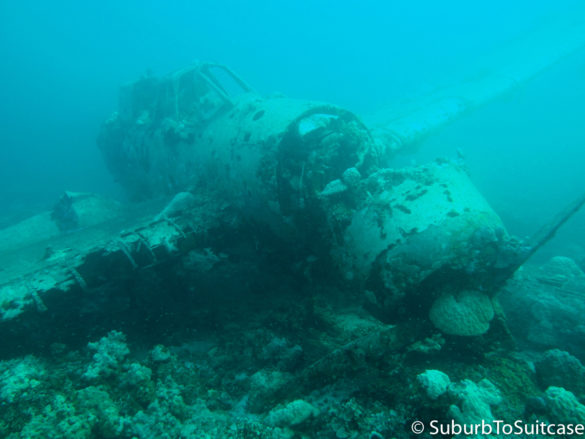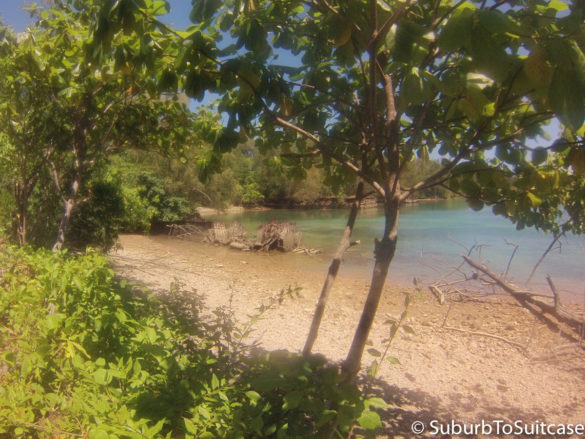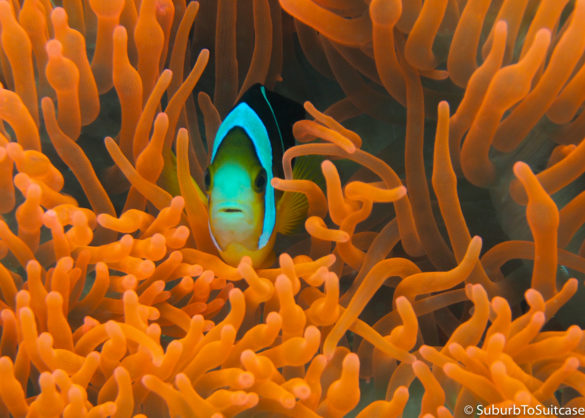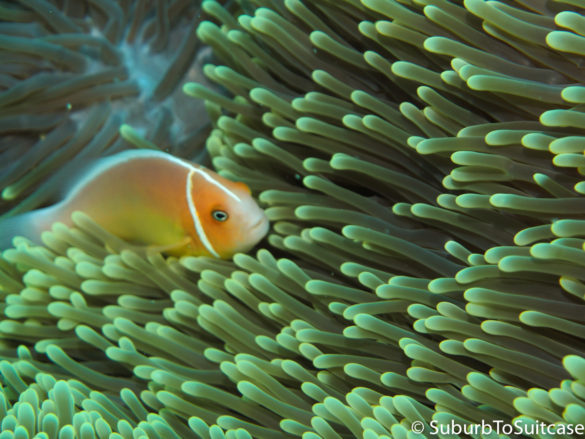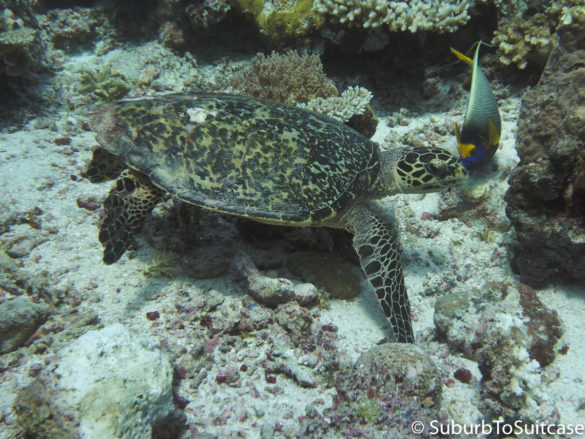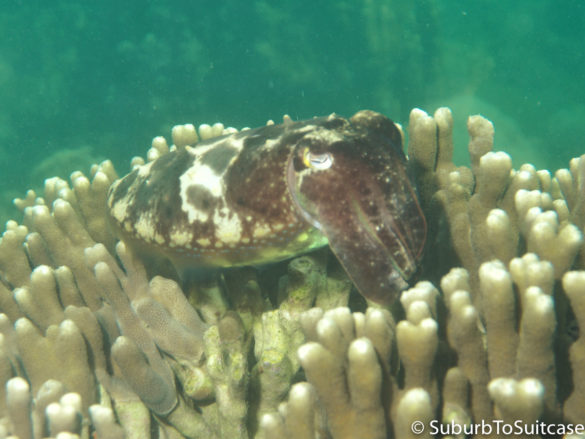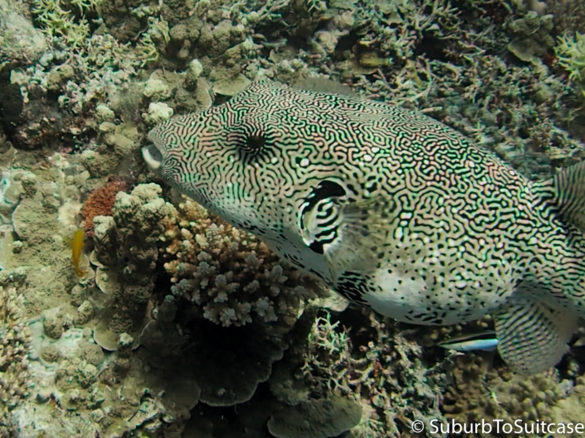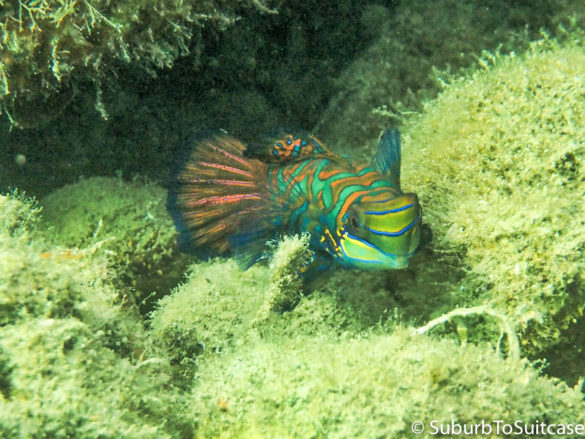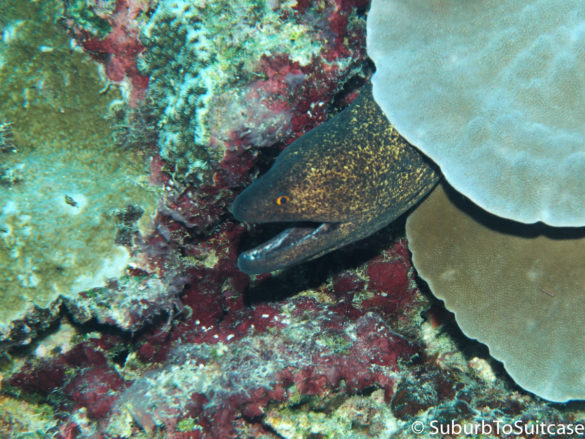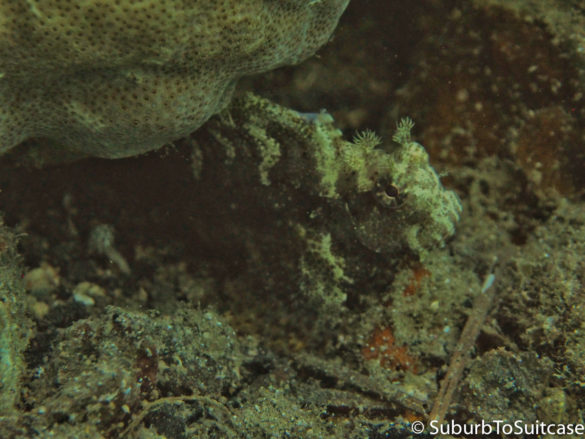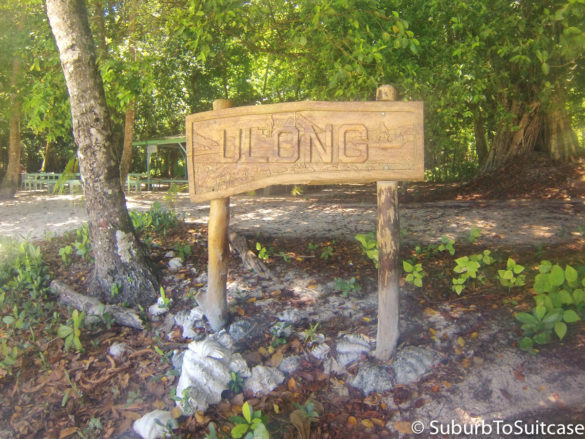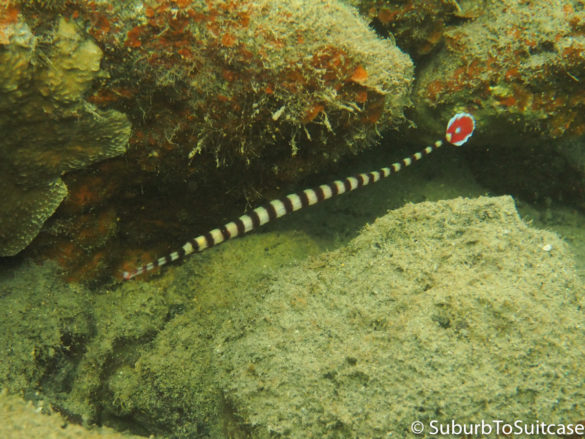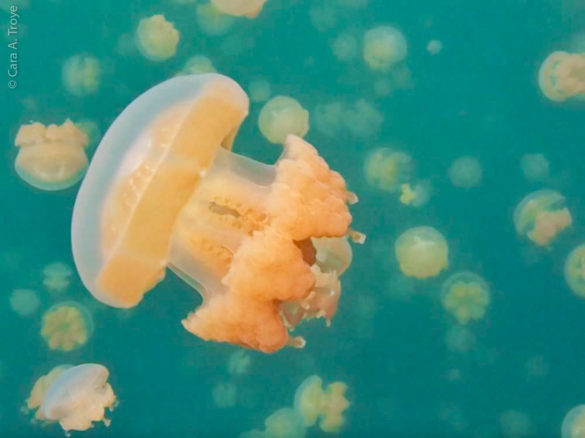Palau’s Rock Islands (specifically the Southern Lagoon) might be best known as a UNESCO World Heritage site and also the location where the 10th season of the U.S. television show Survivor was filmed. These islands of volcanic origin are primarily uninhabited limestone, dense with green fauna and encircled by turquoise shallows with a wide variety of marine life in the surrounding reef system. Boat rides on sunny calm days are breathtaking. Also notable for Palau is the history surrounding WWII’s Battle of Peleliu. Many undisturbed war artifacts can be found along the beaches at Peleliu Island or within a short jungle walk. Palauans are still recovering and destroying unexploded ammunition around the island.
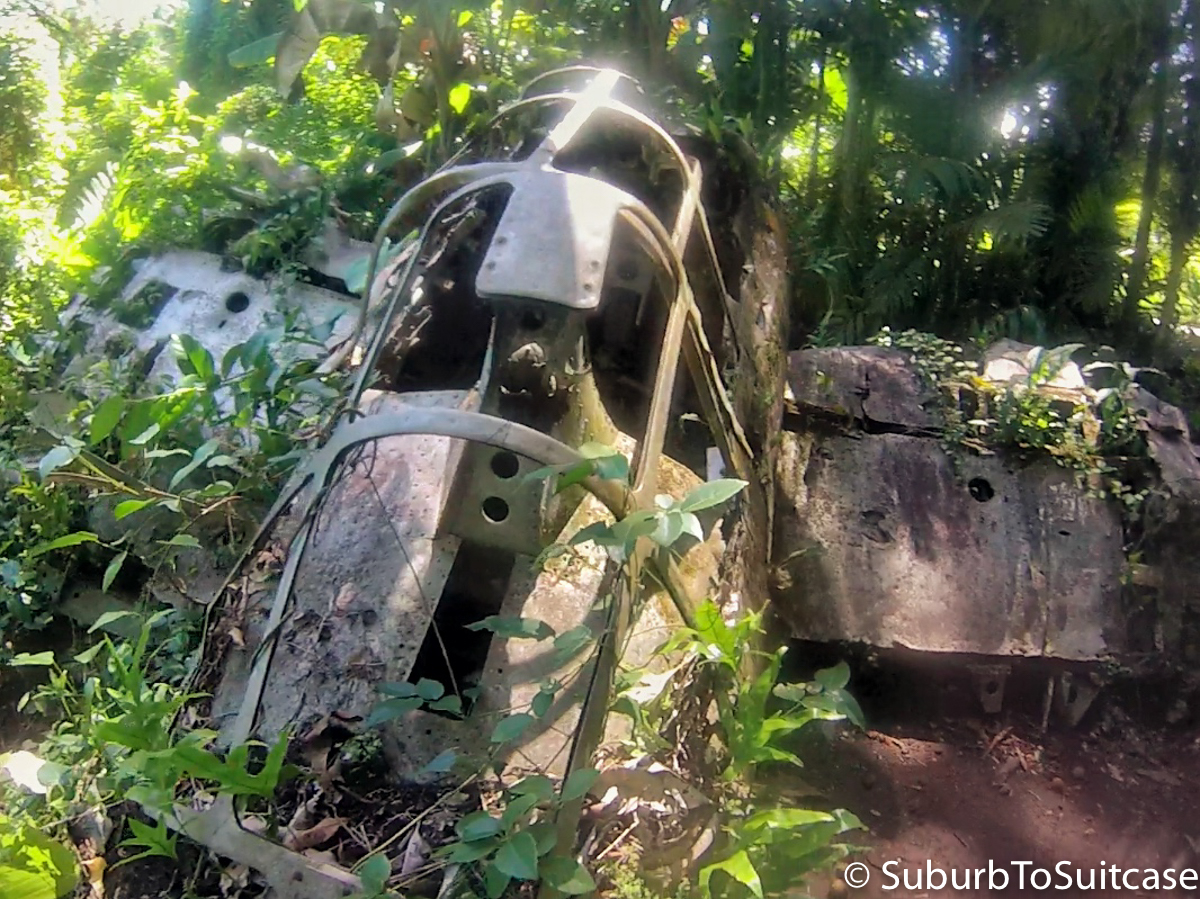
WWII Japanese Zero Fighter Plane on Peleliu Island
Palau is a thrill ride for advanced divers. It might not have the same appeal for a traditional vacationer hoping to just find a quiet beach and tourist center. Palau waters are a shark sanctuary – 600,000 square kilometers are actually protected from commercial fishing. Activity and behavior of the shark population intensifies over the full moon. I visited over the blood moon which was part of the total lunar eclipse so the sharks were out in full force on almost all of my 25 dives. The premiere shark site is Blue Corner where divers hook to the edge of the reef and suspend in the ripping current as large counts of both grey and white tip reef sharks (along with barracuda, tuna and whatever else decides to tag along) glide past. It is pretty incredible for a diver who enjoys close-up interactions with large pelagics. Because of the way the currents switch, there are times where you need to surface in the deep blue as opposed to over a reef. That makes for an eerie surface interval when you see dozens of sharks swirling below your fins.
Perhaps the most enjoyable non-diving experience for me in Palau was Jellyfish Lake. This Southern Lagoon freshwater body requires a steep climb up and down a hill to the isolated lake itself. The lake is loaded with golden and moon jellyfish, but naturally separated into two distinct layers – one oxygenated (top 15 meters) and one anoxic (below 15 meters). Diving is prohibited but swimming and snorkeling are approved. Those who stay above the 15 meter mark are safe and the jellyfish nematocytes are not generally strong enough to cause stings except to potentially sensitive areas like around the mouth and lips. I used a rashguard and shorts without any stings even with jellies swimming into my hands, legs, face and feet. It is nearly impossible to avoid the jellyfish due to the intense volume, but a guest should take care not to intentionally cause harm. These little creatures feel like delicate gelatin bubbles when they come in contact. The whole experience was peaceful and virtually intoxicating.
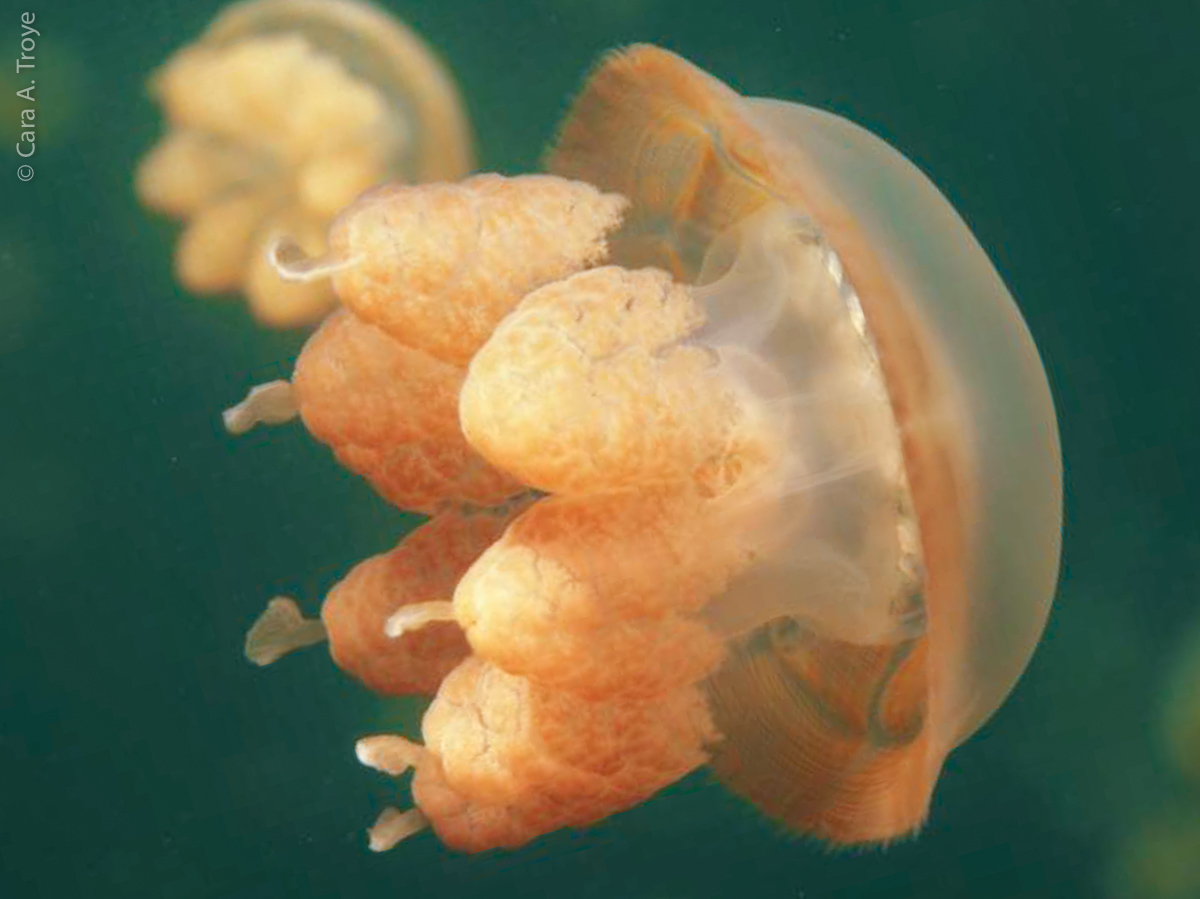
Golden Jellies in Jellyfish Lake
‘There is a lot to see underwater including sizable marine life (wrasse, sharks, turtles, eels, swirling bait balls, tridacna clams) and macro (nudis, blennies, gobies, anemones) as well. I most enjoyed photographing the Napoleon wrasse and colorful mandarinfish. The big wrasse were curious and interactive so they tended to initiate photo opps on their own. Unfortunately, the little mandarinfish were elusive and somewhat skittish, so I only snapped a couple of marginally successful photos during a shore dive.
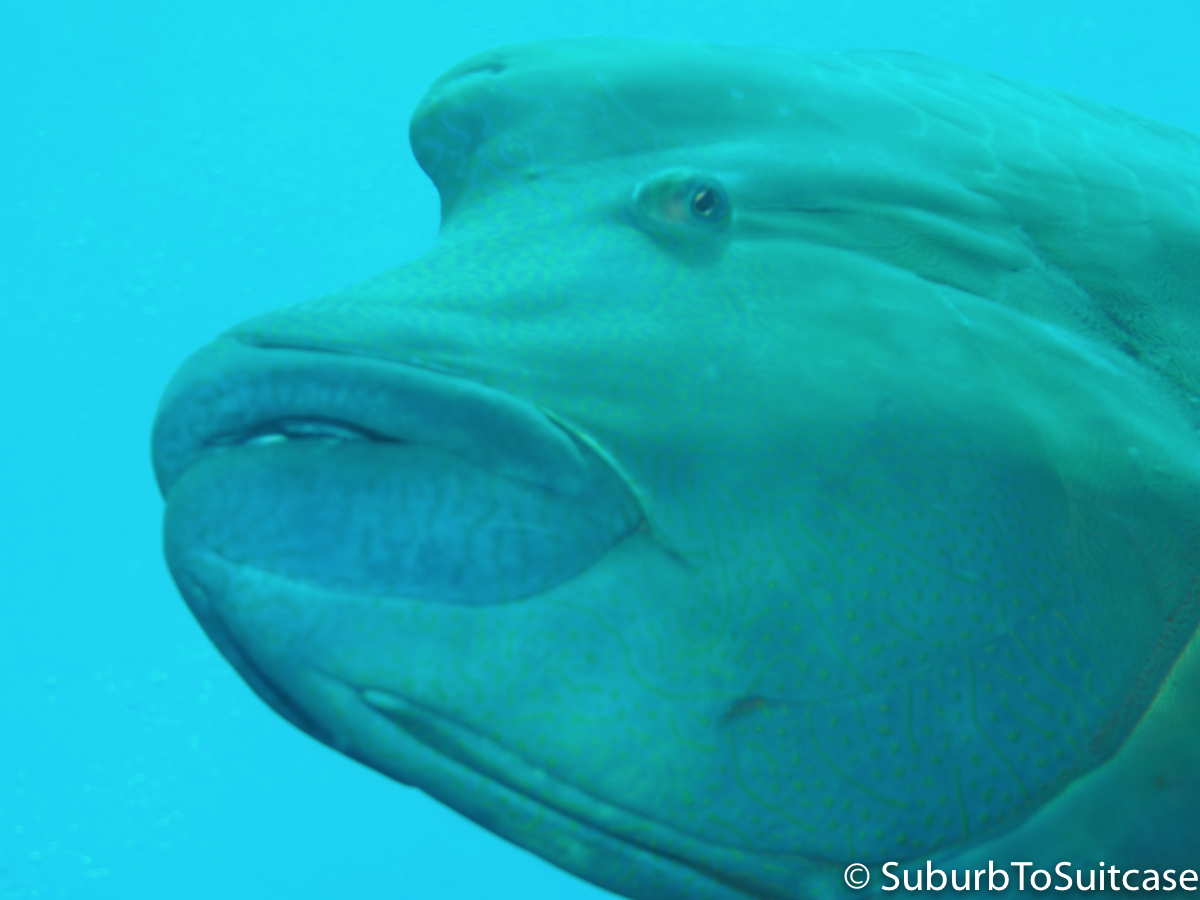
Giant Napoleon Wrasse at German Channel
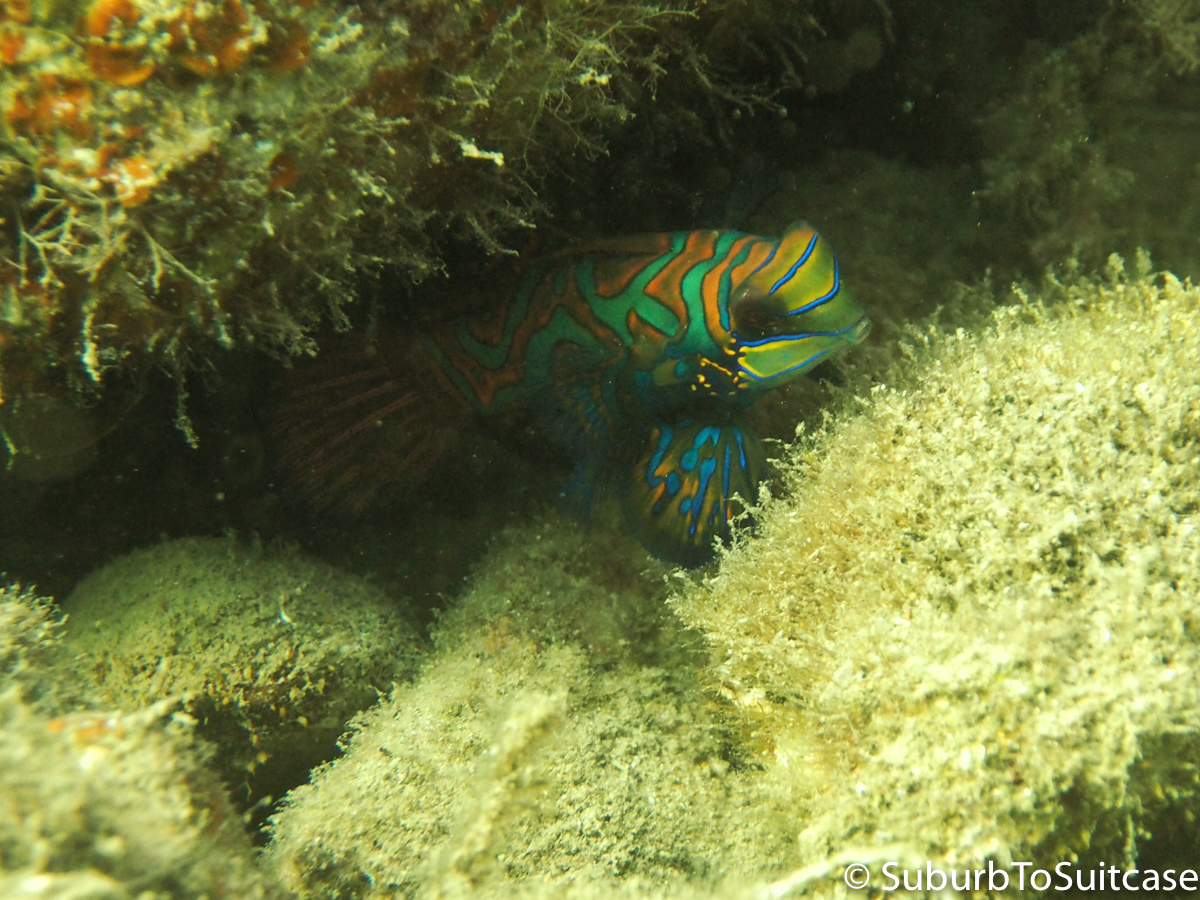
Tiny Mandarinfish at Sam’s Wall in Koror
Travel Tips:
- From the U.S., Palau is many air miles away, requiring at least one long flight, so compression socks will help save your circulation.
- Pack water sandals if you plan to explore Jellyfish Lake – the climb to and from the lake is a bit strenuous. Sturdy shoes help with the sometimes slippery steps. Keep in mind that you will be carrying your snorkel gear and camera equipment up and down, so pack light or the climb will become heavy, very fast.
- There can be strong and unpredictably changing current patterns in Palau – this is what brings in the large pelagic life. Come prepared with strong swimming skills, advanced buoyancy control and good air consumption. Those who fear sharks may want to stay out of the water, particularly around the moon cycles.
- Ocean temperatures are warm in Palau (82-84° F even at depth) so it is tempting to wear limited exposure protection – do this at your own risk. There are stinging jellyfish interactions possible at some dive sites (not including Jellyfish Lake). A number of us were stung and while the initial discomfort is relatively fleeting, the spots will likely last a couple of weeks. Have hydrocortisone cream and antihistamines packed just in case. Boats are usually stocked with vinegar but that may or may not help.
- Remember, there are water hazards beyond inquisitive sharks. Hydroid coral stings are miserable (I cannot stress this enough – the blisters rivaled a case of shingles for over a month) so be careful not to brush up against anything even with exposure protection. This is particularly important to remember when reef hooking since the abruptly changing currents can flip you over. Titan triggerfish can also be extremely protective when nesting so steer clear of these whenever you see their nose close to a large crater-like hole in the sand. Sadly, I learned both of these lessons in Palau – two friends actually retrieved the fin I kicked off when I was defending myself against the aggressive triggerfish (that’s how intently I was kicking). Sure, we were all laughing hysterically at the time, but it was a cardio workout I would like to avoid going forward and I now have a series of bite marks on my fin as battle scars.
- Maintain realistic expectations about the quality of underwater photography possible here so that you can be pleasantly surprised if you get some great shots. Remember that the current is fast, the water is full of nutrients and there is much more large sea life here than macro that you will be able to capture. You may or may not find mantas so do not count on them.
- Bring money. Lots of it. Palau is an expensive destination, whether for flights, accommodations, taxis, diving or restaurants. I found it to be more expensive than my home base in the States which surprised me.

